Alexander J. Motyl's Blog, page 5
February 29, 2016
Managing Kyiv's Government Crisis
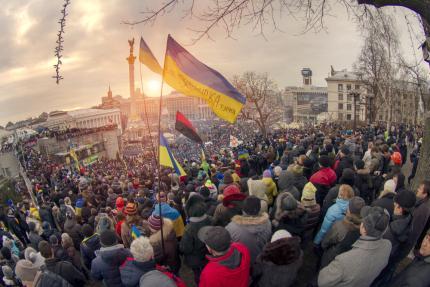
For those who are puzzled by current goings-on in Ukraine’s government, here are a few tips.
First, let’s not confuse “crisis of government” with “crisis of Ukraine.” True, Prime Minister Arsenii Yatseniuk is unpopular and should probably resign. Also true, his cabinet needs reshuffling. But it’s illogical to jump from the claim that the government is dysfunctional to the claim that Ukraine is experiencing a “grim slide.” Governments are not countries, even when they’re absolutist, as in Louis XIV’s France, or fascist, as in Vladimir Putin’s Russia. Ukraine is a poorly functioning democracy—which means that its poorly functioning democratic institutions do not determine the fate of the country as a whole.
Second, let’s not assume that resignations by reformist ministers mean that “there have been no reforms” or that “reforms have stalled.” When Minister of Economy and Trade Aivaras Abromavicius resigned a few weeks ago, most commentators bemoaned his leaving because he was a “reformer” while simultaneously claiming “nothing had changed.” These declarations are incompatible. If he was a reformer, then something must have changed under his tutelage. If nothing had changed, then good riddance to him. In fact, as virtually all objective analysts in Ukraine and in the West say, Ukraine has changed much in the last two years. It needs to change much more—especially in rule of law, where reforms have been hesitant. But the country has indeed changed.
Third, let’s not assume that Ukraine’s current governmental crisis cannot be managed. Ministers resign all the time; prime ministers are detested all the time; cabinets are reshuffled all the time. The current Ukrainian crisis is no different from scores of similar crises in other countries. Sometimes they end well; sometimes they end badly. One big difference about Ukraine’s crisis is that Western institutions and leaders hold significant leverage now, and they are applying pressure and insisting that Kyiv find a solution. The jury is still out with respect to Kyiv’s ability to manage the crisis.
Fourth, let’s not assume that the language of gloom, doom, despair, and betrayal that Ukrainians so relish offers a way out of the crisis. If everything is hopeless, then why bother crafting effective policy? If they’re all crooks and traitors, then why not just bring back Viktor Yanukovych and his thugs? This is not to suggest that we don rose-tinted glasses. However, it is to suggest that the manner in which Ukrainians “frame” the challenges ahead directly affect how, or whether, they address them.
Finally, one example of how not to think about Ukraine and one of how to think about it.
The first is a piece in Time magazine by Serhiy Lyovochkin, identified as “a member of the Ukrainian parliament and one of the leaders of the Opposition Bloc political party.” Time shamelessly omits to mention that Lyovochkin—Ukrainians usually append the modifier “odious” to his name—was also Yanukovych’s right-hand man. For Lyovochkin to talk about “fixing my country’s broken system” is, thus, the height of gall. He helped break the system that is now so difficult to repair. Lyovochkin had no qualms as the Yanukovych gang ravaged the place he now calls “my country.” Truly fixing Ukraine means instituting rule of law, which in turn means making Lyovochkin’s return to Ukrainian politics as unthinkable as Joseph Goebbels’s to Germany’s.
The second piece is a smart and balanced analysis of the ongoing crisis in the indispensable VoxUkraine. The authors judiciously analyze its causes, isolate several cons and pros of the crisis, and suggest a variety of possible outcomes. Their conclusion is worth quoting at length:
The failed No Confidence Motion is neither a unique occurrence for Ukraine nor a catastrophe. Such a scenario has been played out in many other countries. In Ukraine, we observe not only the political struggle and negotiations between major political parties, but also an attempt of a minority coalition parties to strengthen their voice and increase the share and loyalty of electorate by speaking openly against the governing parties.
Despite the bitter scent of renewed political bickering, the failed NCM has helped to avoid an even greater disaster (early elections would not only take a lot of precious time, but could give rise to populist politics and endanger the success of reforms). Still, the coalition parties have to avoid the political stalemate by quickly reaching agreement over changes in the government and accelerating the reforms. Hopefully, this will be done, given the pressure of domestic audience and international partners. The memories about the 2005 post-Maidan political fiasco and the second anniversary of Euromaidan sacrifices should also help.
Such conflicts are likely to happen again if the underlying reasons for political instability are not addressed. The constitutional conflict between the PM and the President, low quality of “old” elites, absence of ideology based parties and imperfect election laws threaten the long-term success of reforms in Ukraine. One of the possible solutions could be constitutional changes developed by an impartial Constitutional Assembly with wide participation of experts and civil activists that would finally answer the question – is Ukraine a parliamentary or a presidential republic, i.e. who is the head of the executive branch – the president or the prime-minister? This would decrease the potential for political infighting and make politicians more accountable to the people by drawing clear responsibility lines within the government.
So drop your unwarranted assumptions, dump Lyovochkin on the ash heap of history, and listen to the vox of reason.
OG Image: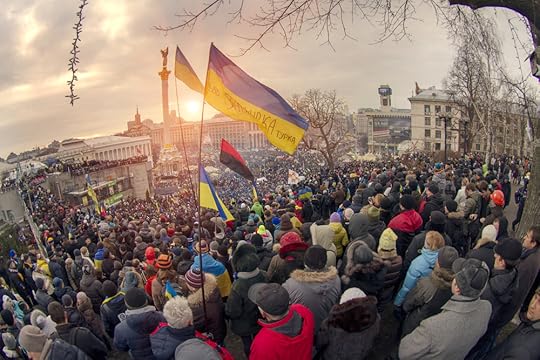 Europe and Central AsiaUkraineUSFranceRussiaVladimir PutinPrime Minister
Europe and Central AsiaUkraineUSFranceRussiaVladimir PutinPrime Minister
February 25, 2016
Why Reintegrating the Donbas Is Suicide for Ukraine
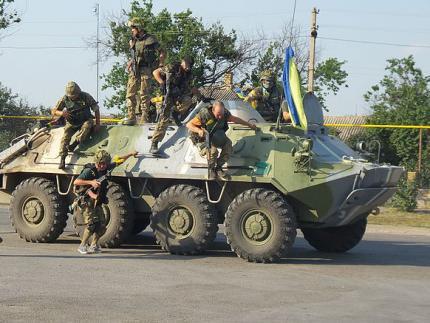
If you’re wondering why the Minsk peace process isn’t leading to peace, look no further than a recent interview with Vladislav Inozemtsev, a highly respected Russian economist and director of the Center for the Study of Postindustrial Society in Moscow. The bottom line—surprise, surprise!—is this: Vladimir Putin doesn’t want peace. He wants to make Ukraine into a permanent backwater state dependent on the Kremlin.
How? By forcing Kiev to reintegrate the now occupied, politically poisoned, and economically ravaged Donbas into Ukraine, knowing full well that this region, now forever crippled by Putin’s proxies, will condemn Ukraine to being a permanently bankrupt puppet of the mafia state next door. This would be suicide. Tragically, although many Ukrainian policymakers understand it makes no sense for Ukraine to infect itself with this cancer, the power of Ukrainian patriotic rhetoric—“The Donbas is eternal Ukrainian land!”—may wind up saddling the country with a burden so heavy that it will crush its sovereignty and its democracy, move it decisively away from Europe and the world, and succeed in achieving what Viktor Yanukovych failed to do: transform Ukraine into a backward hinterland of a backward imperialist petro-state.
Is Moscow planning to annex the separatist Donbas enclave? Here’s Inozemtsev:
It’s not. … Perhaps the Kremlin considered this option at the start of the shocks in April-May 2014, but now, after the war, when we have become witness to enormous destruction, a dysfunctional system, and the region’s transformation into an economic wasteland, obviously Russia will not annex it. … Much there has been destroyed, much has been stolen, removed to Russia and resold. I believe this region represents no special economic advantage. More than that, consider what it used to have: the coal and metallurgical industries. Metallurgy remains in Mariupil, which is, thank God, under Ukrainian control, while the coal industry is very unprofitable. Ukraine’s budget subsidized the Donbas for many years. … Russia knows this industry is unprofitable and has no intention of supporting the east of Ukraine….
So Moscow wants the so-called Donetsk and Luhansk People’s Republics to rejoin Ukraine?
All of Russia’s policies after the collapse of the Soviet Union—and not just Putin’s—have aimed at creating a mess somewhere and leaving it in that condition. They tried to use Transdnistria to undermine Moldovan statehood, but Transdnistria turned out to have no benefit for Russia, while annexing it was undesirable as it would have facilitated Chisinau’s road to Europe. The same happened in Georgia. Now it’s Ukraine’s turn. Moscow doesn’t need the Donbas or a strong Ukraine. The Kremlin wants to saddle Kyiv with permanent problems. So that Ukraine won’t be able to join the EU and NATO due to its territorial conflict. So that the so-called DNR and LNR will conduct Moscow’s line in Ukraine’s parliament. That’s the hook on which Ukraine should hang.
Economist Anders Aslund is quite right to argue that Ukraine shouldn’t pay for the Donbas:
Who should pay for the restoration of the Donbas? The obvious answer is the aggressor, Russia. In a just world, Ukraine would add a demand to the Minsk negotiations for some $20 billion in war reparations from Russia for the Donbas. In reality, however, only losers pay war reparations.
For the foreseeable future, it is unrealistic to expect that Ukraine will be able to finance the restoration of the Donbas. Nor can the already overindebted country borrow money to do the job. It would have to leave much of the Donbas’ urban territories as industrial wastelands, which would make it arduous to reintegrate the population.
I fully agree with Aslund’s policy recommendation, but can’t imagine that it’ll happen anytime soon:
The only sensible solution is for the European Union and the United States to put up substantial grant assistance to Ukraine for the restoration and reintegration of the Donbas. For the sake of stabilizing a former war-ravaged area in Europe, $20 billion is no great amount. Just compare it with the $300 billion the European Union has spent on the Greek financial crisis.
If Russia and the West won’t pay for Russia’s criminal devastation of the DNR-LNR-controlled territories, then Ukraine will get stuck with the bill. And that’ll kill any hope that Ukraine will become a viable and modern democratic state.
Kyiv must find the courage to refuse the suicide option, declare the Donbas enclave Russian-occupied territory, and wash its hands of the mess.
Here’s another reason to get rid of that cancer. I recently received the following email from one “Andrei Poletaev.” The subject heading was: Disgusting Ukrainian Nazi. Here’s what he said:
You are a disgusting miserable Ukrainian right wing propagandist and extremist. You have no idea what you are talking about, go to Donetsk or Lugansk and talk to people and you will see how much they despise your Ukrainian Bandera murderous regime. I have a lot of friends from Novorossia and i don’t [sic] a single person who supports fascist Kiev junta. Remember my words, sooner or later, Donetsk, Luganks [sic] and the entire Novorossia will be free. And you, dirty Bandera Nazi apologist, will burn in hell.
I don’t doubt that “Andrei Poletaev’s” friends are exactly as he describes them. But which should Ukrainians prefer? Burning in hell or breathing the same air he and his friends in the DNR-LNR breathe?
Photo Credit: Ліонкінг
OG Image: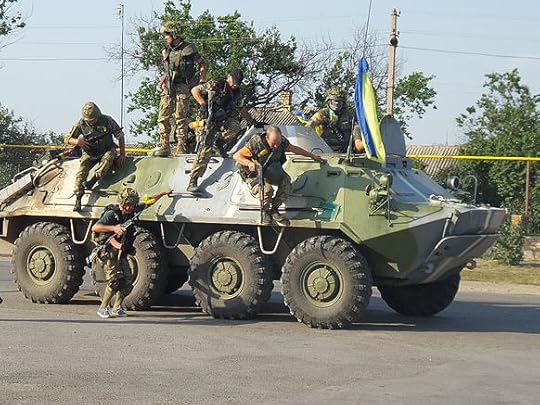 Europe and Central AsiaDonbasUkraineRussiaRussian
Europe and Central AsiaDonbasUkraineRussiaRussian
February 12, 2016
Signs of Hope for Judicial Reform in Ukraine
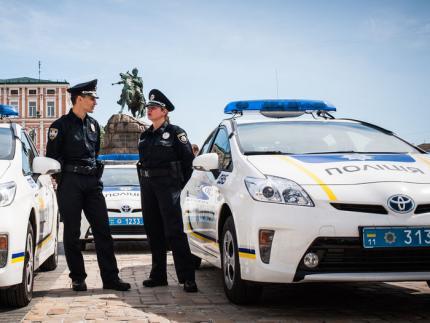
Post-communist Ukraine has long struggled to reform its judicial system and rid itself of pervasive and systematic petty and serious corruption—one of the many poisonous legacies experienced by all post-Soviet states. I recently interviewed Oleksandr Marusiak, an articulate and serious 25-year old from Chernivtsi in western Ukraine, who is part of a new breed of young people being recruited to reform and modernize the country’s police and its policing methods. As he described his on-the-ground experience in the recruiting and training process, I couldn’t help but be hopeful that, despite the continuing problems in Kyiv, some reforms just might be taking hold in the provinces. Here’s why:
MOTYL: How did you apply for and get the job?
MARUSIAK: At the beginning of December 2015, I responded to an online “call for applications” for the post of instructor of patrol police officers. The Chernivtsi Province Department of National Police (a regional agency of the Ministry of Internal Affairs) was looking for experts in 22 disciplines. Instructors were supposed to have a variety of qualifications, such as teaching experience, strong communication and organizational skills, and the like. The announcement asked that applicants submit their resume to a special electronic address and note their preferred area of instruction. I chose “Defining Criminal Offences and the Bases of Criminal Procedures,” inasmuch as I had received a Master’s degree in criminal law from the Odessa University Law School in 2013.
About a week later, I was invited for an interview with three officials, two from Kyiv (both members of the International Criminal Investigative Training Assistance Program Office in Ukraine—ICITAP), one, a defense attorney, from Chernivtsi. During the interview they asked about my work experience, teaching methods, and knowledge of the topic. Among the specific questions they asked were: “How would you explain the importance of understanding your subject area to police officers? How does theft differ from robbery? With which crimes must police officers be most familiar?” That same day, they called again and told me I had gotten the job and that I should attend a general methodological training session for instructors.
In all, I attended three such mandatory training sessions. At the first one, several Kyiv instructors who had already worked with police officers shared their experience with us, emphasizing the pedagogical differences between training sessions and university courses (which I had already taught) and highlighting the kinds of problems they encountered in teaching police officers and the solutions they developed. The other two sessions were specialized, focusing on the subjects we had chosen. All of us received electronic versions of all the instructional materials, as well as slides.
MOTYL: Were the training sessions useful? Were the materials presented objectively and professionally?
MARUSIAK: These sessions were useful for me, because I had had no such training before, and it helped me to understand the educational specificities involved in teaching police officers. I also had no complaints about the quality of the materials, as they were logically and clearly presented.
MOTYL: Did you develop your own curriculum?
MARUSIAK: No, it had already been prepared by the ICITAP experts. My class consisted of 11 meetings and an examination. Each session was structured in the following manner. We’d start with a quiz on the previous day’s materials and with an analysis of their answers to the questions. Then we’d move on to a practical analysis of their homework, sometimes as a whole class, sometimes in teams. We’d end by discussing new material, which would then serve as the subject of the next session’s quiz.
MOTYL: Were the students interested? Did they take the course seriously? How many weeks did the course last?
MARUSIAK: The course lasted three weeks. Of course, this is a rather short time for understanding such a complicated subject, but it was enough for the students to get a rudimentary understanding of common criminal offences and legal procedures. Students took the course seriously, as they recognized that their future work directly depended on what they learned. Moreover, they understood that questions of self-defense and the legal liability of police officers are also a matter of criminal law in Ukraine.
MOTYL: How many students did you have and who were they?
MARUSIAK: I taught seven classes of about 30 students per class. In general, they were 21- to 35-years old. Women were about a third. Some students were former employees of the Ministry of Internal Affairs or advanced law-school students; some were recently demobilized soldiers who had served in eastern Ukraine; some had backgrounds in geography, biology, theology, and computer programming; some had no higher education.
MOTYL: Did they tell you why they had signed up?
MARUSIAK: Many joined because they believed in and wanted to be part of the reforms taking place in Ukraine’s system of law and order. Some confessed they were attracted by the high salary. Many just wanted to try something new.
MOTYL: Did you encounter any corruption in the process?
MARUSIAK: No.
MOTYL: Were you surprised?
MARUSIAK: Somewhat. But there were several anti-corruption safeguards at work. First, we received a high salary, at least compared to what I earned teaching at the university. Second, instructors were provided with the quizzes just before they were supposed to be administered. Third, the students completed the final examination electronically. Fourth, the officer students evaluated our performance at the end of the session. Finally, we instructors also evaluated the officers with respect to their leadership abilities, ability to work in a team, motivation, and so on.
MOTYL: What are your general impressions of this aspect of reform in Ukraine?
MARUSIAK: I liked it. All stages of the educational process were fully transparent and practically focused, and the students were highly motivated. I wish that the next part of police reform in Ukraine would be at least half as successful as this one was.
OG Image: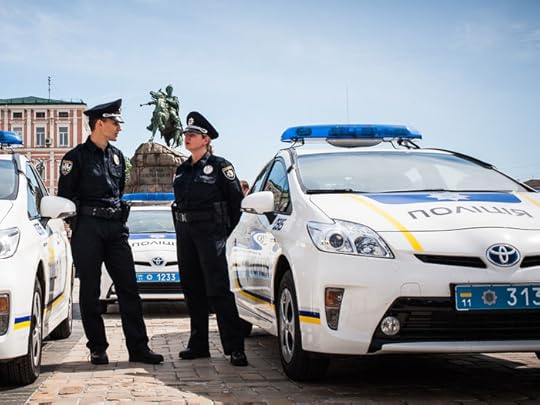 Europe and Central AsiaUkraine
Europe and Central AsiaUkraine
February 9, 2016
Stalin’s Partisans in Ukraine
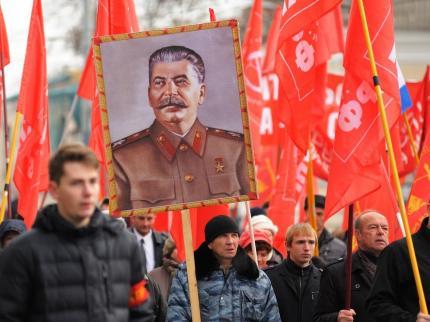
Alexander Gogun’s excellent study, Stalin’s Commandos: Ukrainian Partisan Forces on the Eastern Front, sometimes reads like an analysis of Putin’s commandos in the eastern Donbas. In both cases, the official Moscow line was and is that they’re a popular movement generated by discontent from below. In fact, Stalin’s commandos, like Putin’s, were largely creatures of the Kremlin—a point Gogun, a Russian scholar currently based at the Free University in Berlin, makes forcefully, repeatedly, and convincingly.
Gogun details how the partisans were structured and led (from abroad), what they did (terrorism) and whom they fought (the Germans and Ukrainians), how they interacted with the local population (with abandon), what their behavior looked like (robbery, drunkenness, and rape), and how they compared with the Ukrainian nationalist insurgents, the UPA, and the Polish nationalist guerrillas, the Home Army (AK). One table (p. 160) has a wealth of information: the 11 largest units of the Soviet Ukrainian partisan movement consisted of 45,478 fighters. Just over 11 percent were killed; 2 percent were executed or deserted; 7 percent were women; 57 percent were Ukrainians, 25 percent were Russians, and only 13 percent were members of the Communist Party. Their job was not to defend the people, but to fight the Germans, regardless of the exceedingly high toll the local population paid for their actions. Both the UPA and AK, in contrast, were careful to defend the people they claimed to represent.
Unsurprisingly, Stalin’s commandos were most active in the forest and marsh regions of northern and northwestern Ukraine. That fact greatly contributed to one of the major secondary-theater wars during World War II: the bloody Ukrainian-Polish conflict in Volhynia. As Gogun’s evidence demonstrates, the presence of Soviet partisans in this volatile region populated by large numbers of indigenous Ukrainian peasants and many Poles, both indigenous and recent settlers, may have sparked the large-scale violence that engulfed both communities in mid-1943.
Ethnic relations were anything but simple in Volhynia. The Germans terrorized the Poles and Ukrainians and fought the UPA, AK, and the Soviets. Many Poles, and above all the AK, viewed Ukrainians in general and Ukrainian nationalists in particular as their sworn enemies and sympathized with the Soviets, especially after the Polish government-in-exile allied with Moscow by means of the Sikorski-Maisky Pact of July 30, 1941. Many Ukrainians, and above all Ukrainian nationalists, viewed Poles, the AK, and the Soviets as their sworn enemies and the Germans as their situational allies (in early 1941 and 1944) or their situational enemies (1941-1943). The Soviets regarded the Germans and Ukrainian nationalists as their enemies, mistrusted the Ukrainians, and viewed the Poles and the AK as situational allies.
Soviet propagandists and neo-Soviet scholars generally ascribe the UPA’s initiation of anti-Polish violence in mid-1943 to an innate proclivity to kill. The approach is racist and the evidence is unpersuasive, but more important, the story makes no sense as it excludes context. Thanks to Gogun, that context has been brought into focus. It’s highly likely that Ukrainian nationalist suspicions of Poles reached a boiling point and translated into ethnic cleansing just as Soviet partisans began expanding their influence and threatening Ukrainian positions in Volhynia in early 1943, while many Poles looked on, or appeared to look on, approvingly.
One of Gogun’s great virtues is to present this and other controversial issues objectively, without recourse to the sub rosa invective that frequently accompanies such narratives. His final chapter, a comparison of the UPA, AK, and the Soviet partisans, is especially useful, as it accomplishes what demonizers and hagiographers of these groups signally fail to do: provide a comparative analysis demonstrating that all three movements were guerrilla forces with pluses and minuses to their credit and detriment. All three could be brutal. All three resorted to extreme violence. And all three pursued wartime political agendas and none were simply crazed killers.
Gogun purposely shatters the Soviet mythology surrounding Stalin’s commandos, but he also reminds us that myth-making is inimical to good history and that good history always rests on detailed demonstrations of complexity appropriately contextualized. The high standard he sets is welcome.
OG Image: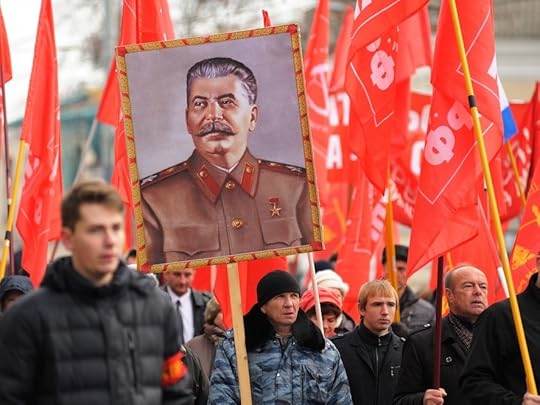 Europe and Central AsiaUkraineStalin
Europe and Central AsiaUkraineStalin
February 3, 2016
At Last, Military Reform Makes Headway in Ukraine
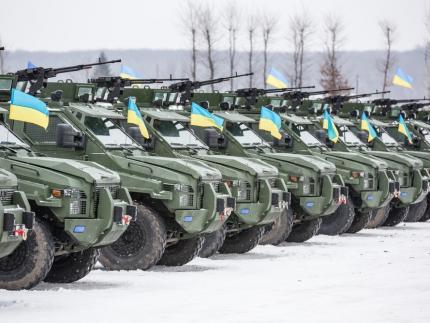
When a close observer and frequent critic of Ukraine’s military establishment has something good to say about it, we may want to listen.
Yuri Butusov, military analyst and editor of the censor.net website, describes a January 21 roundtable on defense reform he attended at the Ministry of Defense. He lists a number of firsts:
For the first time, a draft reform strategy was developed on the basis of the new National Security Strategy and the new Military Doctrine. It’s impossible to begin structural reforms of the Ministry of Defense and the Armed Forces without such a plan.
For the first time, outside experts were invited to provide criticism, and not praise.
For the first time, discussion focused on a finished document, and not a concept.
For the first time, “NATO standards” were defined as not something abstract, but as certain concrete obligations.
In a word, Ukraine’s military establishment appeared to be serious and willing to listen. Moreover, the focus of the discussion—the Strategic Defense Bulletin—elicited, according to Butusov, a generally positive response from the civilian participants. There was also substantive criticism, especially of the document’s suggestion that NATO standards be introduced only by 2018. Obviously, notes Butusov, changing military hardware and training takes time. But “to change the administrative system, to replace our absolutely ineffective administrative formula with NATO’s decentralized system of decision-making and greater leadership responsibility does not require many resources or time. We have the cadres. We know how to do it.”
Butusov notes that the document’s main shortcoming is that it fails to specify military threats. Without that, it’s impossible to establish reform priorities and the depth of desired changes. “We don’t need standards for the sake of standards,” says Butusov, “but results” in case of a “massive Russian aggression.” After all, “we need to know the war and scenarios for which we’re preparing.”
Another military analyst, Dmytro Tymchuk, puts the matter this way:
The main goal of any reform of any armed forces is to create a structure able to oppose effectively the most likely military threat. For us that’s an open and massive aggression by the Russian Federation, regardless of how improbable it may be.
Instead of focusing on the main threat, however, “we are currently situationally reforming the army in terms of the hybrid war with Russia” and the Anti-Terrorist Operation against the separatists in the eastern Donbas. That’s too bad, because the needs of conducting hybrid war are different from those of conducting a massive land war.
Rather more bullish on the prospects of reforming the Ukrainian defense establishment is Andrii Zahorodniuk, the head of the Ministry of Defense’s Reform Office. In addition to the Ministry’s own staff, an “enormous number of people are taking part in developing reform,” he says, and reforms are already taking place on several levels. Zahorodniuk has big hopes for 2016:
Our main task in the new year is to unite all the reform initiatives…. At present, we have about ten reform initiatives at the Ministry of Defense and the General Staff, with no coordination among them…. The Strategic Defense Bulletin is a kind of roadmap for defense reform.
Butusov might be less sanguine about the Bulletin’s serving as an effective road map, but he would agree with Zahorodniuk that the major obstacle to reform is the bloated, obstructionist bureaucracy. “90 percent of our work goes to fighting it,” says Zahorodniuk. “Everyone whose signature is required can slow down or stop the process. One of our colleagues recently calculated that gathering the signatures for just one document required walking nine kilometers within the corridors of the Ministry.”
All bureaucracies change slowly and unwillingly, as Zahorodiuk understands. “The things we’ll be doing this year will affect many people,” he says hopefully. The good news is that he expects “a great deal of resistance.” This may mean that those nine kilometers could soon be reduced—but only if Ukraine’s Butusovs, Tymchuks, and Zahorodniuks keep pushing.
OG Image:
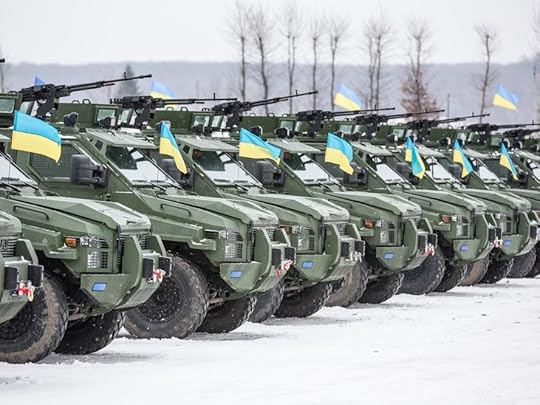 Europe and Central AsiaUkraineMilitary
Europe and Central AsiaUkraineMilitary
January 26, 2016
Ukraine Expands Trade Routes, Bypasses Russia
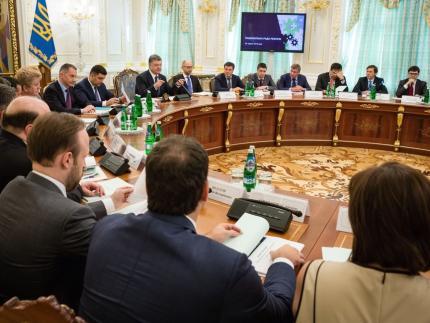
Ukraine is taking two important steps toward expanding its ties with the global economy.
The Beskyd-Skotarske train tunnel in the Carpathians is being widened from one track to two, thanks to funding provided by the European Bank for Reconstruction and Development and the European Investment Bank. The project will more than double the speeds at which trains can travel through the tunnel as well as double the number of trains undertaking the journey. Since 60 percent of Ukraine’s current trade with countries to its west goes through the tunnel (originally built in 1886), the result will be a vastly enlarged capacity for imports and exports with the European Union, which already is Ukraine’s largest trading partner and with which Ukraine now shares a free trade zone. The work is scheduled to be completed by the end of 2017; trains will start using it by mid-2018.
Even more impressive is Ukraine’s participation in the Trans-Caspian international transport route that extends from Georgia, through Azerbaijan and Kazakhstan, to China, thereby bypassing Russian territory. The first trial run of a Ukrainian train consisting of 10 cars and 20 40-foot containers began in mid-January in the Ukrainian port city of Illichevsk. It was transported by ship to Batumi, Georgia. Thence by train to the Azerbaijani port city of Alyat, where it was loaded onto a ferry and crossed the Caspian Sea to Aktau in Kazakhstan. Some cargo will stay in Kazakhstan; some will go on to China, Kyrgyzstan, Uzbekistan, Tajikistan, and Turkmenistan. Naturally, Chinese and Central Asian goods will also flow westwards.
The journey to Aktau is supposed to take about nine days. The train will run three times a week starting in March. Ukraine has high hopes, planning to transport up to 10 million tons of cargo annually via this route.
Ukrainians can thank Russia’s hapless president for their country’s involvement in the Silk Road. Moscow imposed an embargo on the transit of Ukrainian goods in early 2016, as punishment for Ukraine’s pursuit of closer economic ties with the European Union via the Deep and Comprehensive Free Trade Area agreement. That move, like Vladimir Putin’s decision to destroy Western food products and reduce economic ties with Turkey, has only forced Russia’s neighbors to search for alternatives to their traditional over-dependence on Russia. Since the alternatives are there, the big loser is Russia, which, thanks to Putin, will increasingly become isolated, economically and politically. Ukraine will be a big winner, since ending its economic dependence on Russia’s backward energy-based economy is a sine qua non of the still-backward Ukrainian economy’s finally becoming globally competitive. Over time, going global will help create commercial conditions that will allow Ukraine’s trade to expand and its economy to advance and modernize, while Russia’s remains unreformed and antediluvian.
Perhaps the most striking and encouraging aspect to Ukraine’s linkage to the Trans-Caspian trade route is that the country’s leadership was able to successfully navigate and negotiate a complex deal swiftly and efficiently through an intelligent and sustained diplomatic effort.
According to one source:
To organize the running of trains, the Ministry of Infrastructure, Ukrainian Railways, and the Coordination Committee of the Trans-Caspian international transport route made significant and hard work in 2015. The inclusion of Ukraine in the Great Silk Road was first recorded in the Ukrainian-Chinese inter-agency protocol. The possibilities of the project of Trans-Caspian international transport route were presented on 16 November 2015 during a road show and on 3 December 2015 at the International forum “Connecting Europe and Asia: a new look at the formation of the transcontinental route system” in Odessa.
The bottom line is this: Ukraine’s policymakers wisely anticipated the Kremlin’s embargo and even more wisely addressed the looming potential crisis well before it became one. That’s impressive, suggesting that Ukraine can get the job done if and when it needs to.
OG Image:
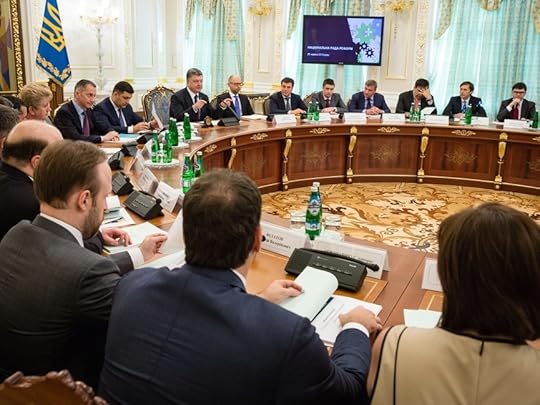 Europe and Central AsiaUkraine
Europe and Central AsiaUkraine
January 15, 2016
The Negativists are Wrong on Ukraine
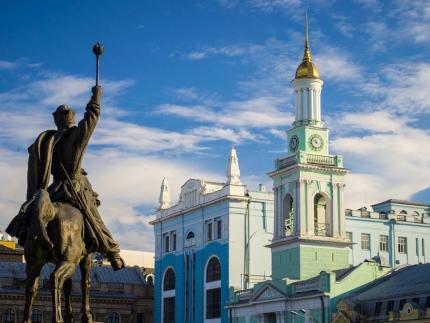
It was at the California Republican state convention in San Diego on September 11, 1970 that Vice President Spiro Agnew immortalized his speech writer, William Safire, by saying the following memorable words: “In the United States today, we have more than our share of nattering nabobs of negativism. They have formed their own 4-H club—the hopeless, hysterical hypochondriacs of history.”
Too bad the witty and erudite Safire, who eventually went on to become a New York Times columnist, isn’t alive today. If he were, he might be tempted to direct his rhetoric at the nattering nabobs and hopeless, hysterical hypochondriacs who comment on Ukraine.
Some live in the West; many of whom never cared much about Ukraine and decided they were experts after surfing the Internet. Many more live in Ukraine; they’re the populists, the right- and left-wing hotheads, the intellectuals who spin pristine theories and then cry foul when reality fails to meet their expectations, and the analysts who refuse to admit that a half-empty glass is better than an empty one.
I’d be rich if I had a hryvnia for every article that said Ukraine was on the “brink of disaster” or the “verge of collapse.” And I’d be richer if I had half a hryvnia for every time people have said that “nothing has changed” in Ukraine since the Euromaidan Revolution.
Here are some of the most popular examples of hopeless hysteria:
The economy is on the verge of collapse. No, it’s not. The macro-economy has been stabilized. A reasonable budget has been adopted. The banking system is being fixed. Energy prices are beginning to make sense. And, thanks to Russia’s Putin, all of Ukraine’s trade will be with EBR (Everybody but Russia) as of 2016. Expect Ukraine’s economy to become more competitive and globally oriented this year.
Ukraine is unstable. Say that again?More Ukrainians are patriotic and committed to statehood than at any time in recent history.The far right is weak; the far left is even weaker. The former Regionnaires organized in the Opposition Bloc are mostly a nuisance. Few people like the president and prime minister, but virtually no one wants to replace them with radicals or bring back Yanukovych. True, many, perhaps most, elites are corrupt, but corruption isn’t instability.
Neo-Nazis are poised to seize power. This claim says more about the West’s phobias than about Ukraine’s problems and about the Western media's love affair with the country’s few score genuine neo-Nazis. This ragtag group is to topple a government? C’mon!
Free Ukraine will split in two. If the country controlled by Kyiv didn’t fracture in 2014, when the government and army were weak, polarization was high, and Putin could have invaded with impunity, it won’t in 2016. In any case, Ukraine’s vaunted East-West “divide” is no more threatening to the country’s unity than America’s red state/blue state divide.
The volunteer militias in free Ukraine are powerful and destabilizing warlords. They were always too few to be destabilizing, and they have long since stopped being powerful. And how can you be a warlord, if you control no territory?
Ukraine will never be normal as long as the Donbas is occupied. Quite the contrary. Ukraine’s chances of becoming normal are high as long as the Donbas cancer remains outside its body politic—which, thanks to Putin, is likely to be a long time
The fact is that, although it still has a very long way to go, Ukraine has changed enormously, and mostly for the better, in the last two years. For statistical evidence, take a look at an excellent joint study recently published by VoxUkraine and the Ekonomichna Pravda website.
You may even conclude that the nabobs and hypochondriacs are right about one thing. Ukraine is on the brink—of success.
OG Image: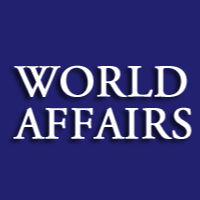 Europe and Central AsiaUkraine
Europe and Central AsiaUkraine
The 2016 Santa-Putin Letters
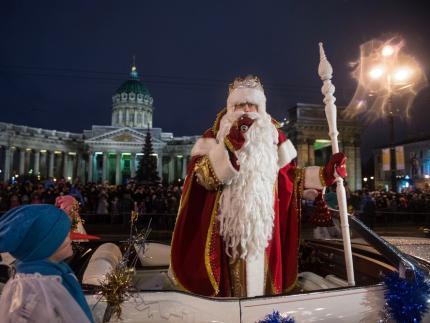
These top-secret letters were brought to my attention by my deep-throat contact in the Kremlin. They appeared just after the Orthodox Christmas on January 7.
To: V. Putin
From: S. Claus
You’ve been decidedly naughty this year, and I’m not at all sure you deserve any presents. Unless some persuasive justification is forthcoming, the reindeer and I won’t be visiting you in the Kremlin.
***
To: So-called “Santa” Klaus
From: The President of Russia
Your lies disgust me. I’m not surprised, though, given your Turkish birthplace, German name, and American sexual orientation. If you were a real man, you’d get rid of that ridiculous costume and show the world your bare chest. What real man hides behind an army of midgets?
***
To: V. Putin
From: Santa Claus
Your invective is unappreciated—and unworthy of a statesman. Shame on you. By the way, I’ve just finished reading two books about you: a novel, Vovochka, and a biography, The New Tsar. Neither paints a terribly flattering picture of you. If any of what they say about you is true, naughty doesn’t even come close to describing your character. Have you considered what you’re doing—to yourself, to your legacy, to your people? I pray for you.
***
To: S. Klaus
From: V. Putin
Listen to me, Klaus, because I will say this only once. The authors of those so-called books are well-known fascists. If you agree with their perverted views, then you are a fascist. If you wonder what we Russian democrats do to German fascists like you, read a book about the Great Fatherland War. As to my people, they love me. And I love them. And all of us love our dear Mother Russia, and she in turn loves us. You and your fascist-imperialist-homosexual buddies have no idea what true love is, Klaus. As to your so-called gifts, keep them. Or give them to the effeminate Ottoman clique in Ankara. Meanwhile, I recommend you read my just-published Words that Are Changing the World: Key Citations from Vladimir Putin. It’s already a best-seller. We’ve printed 300 million copies, so that every Russian has two, one for the home, one for the heart.
***
To: V. Putin
From: Santa Claus
I noticed you didn’t mention the Ukrainians. Aren’t they fascists, according to you? As to your book, I think I’ll wait for it to be remaindered.
***
To: S. Klaus
From: V. Putin
You are beginning to tire me, Klaus. Of course, the Little Russians are fascists. As are the Americans, Turks, Israelis, Germans, Poles, Canadians, British, Estonians, Latvians, Lithuanians, and many, many others. Your elves are also fascists. Unfortunately, fascism rules the day in most of the world outside Russia. But we Russians are used to it. We shall overcome—especially now that my book has finally seen the light of day.
***
To: Vovochka
From: Santa
My elves laughed and laughed after I read them your letter. They say you’re the funniest statesman they’ve ever encountered. I told them you were being serious, but they refused to believe me. “That Poot is a hoot,” they say. My elves know a jokester when they see one, so I’ve decided they may just be right. We’re hoping you’ll agree to visit the North Pole and do your stand-up routine. With Medvedev, of course. He’s your straight man, right?
***
To: Santa
From: Vovochka
My dear Comrade Santa!
What an excellent idea! Me and Medvedev gladly accept your invitation. We shall arrive in exactly twenty-four hours along with my personal entourage of little green elves and a humanitarian convoy of trucks laden with Turkish, European, and Ukrainian vegetables and thousands of copies of my Words that Are Changing the World. Have you ever had Syrian halvah? We’ve got tons of the stuff. Keep the vodka chilled, Santa. I think we’re going to have a ball. As to my straight man, please note that all Russians are straight men. Oh, and one more thing. I’ll also bring you a calendar featuring photos of me every month. That way, you’ll never forget my deep and abiding love for you.
OG Image: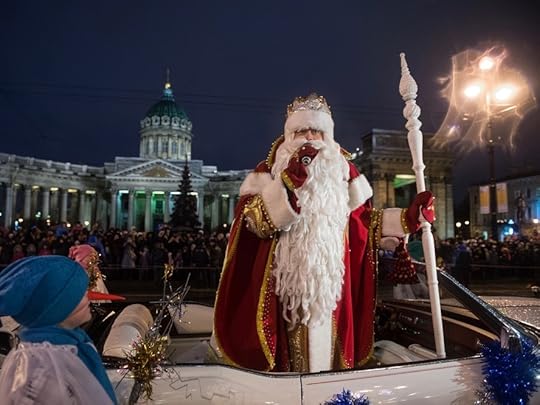 Europe and Central AsiaUkraine
Europe and Central AsiaUkraine
December 30, 2015
Putin is Steering Russia to Collapse
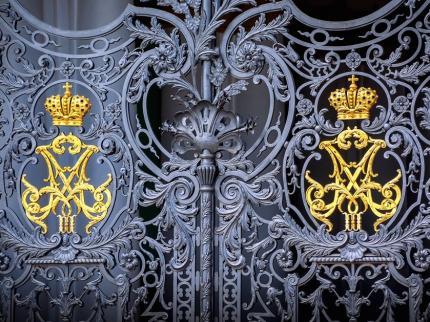
As the new year begins, both Ukraine and Russia are making steady progress. The difference is that, while Ukraine is slowly, and more or less surely, adopting a raft of systemic reforms that will make it a normal Western market democracy, Russia is becoming a failed state. If current trends continue, as they probably will, Russia may even disappear.
That’s not just my conclusion. It’s Dmitri Trenin’s, and Trenin is the director of the prestigious Carnegie Moscow Center and a distinguished Russian analyst who, unlike his former colleague, the anti-Putin firebrand Lilia Shevtsova, has often expressed a soft-line interpretation of the Putin regime and its intentions.
In a recently published commentary, however, Trenin takes off his gloves and compares Vladimir Putin’s Russia to the czarist regime on the eve of World War I. If, writes Trenin, Russia doesn’t develop a new foreign policy and embark on serious internal reform, “the Russian state could share the fate of the Romanov regime in World War I.”
That is, Russia could collapse. In effect, Trenin is comparing Putin to Romanov Russia’s last czar, the hapless Nicholas II, and arguing that he has failed—completely.
Here’s Trenin:
The political conflict between Russia and the United States is fundamental. There may be moments when tension eases and cooperation is possible, but there are no obvious options for strategic compromise. Moreover, Russia has entered a phase of mutual estrangement with a large part of Europe; and it has, for the foreseeable future, acquired a hostile Ukraine on its border, whose new foundation for nation-building is based on hostility to Russia. Finally, Russia has been sucked into the permanent theater of conflict that is the Middle East. …
In its recent history, Russia has sought to embrace one of two competing overarching foreign policy concepts—but both have shattered. … Both concepts—we can call them Plan A and Plan B—came into jeopardy in the first half of the 2010s, and were ultimately torpedoed by the Ukraine crisis.
So what should Russia do?
The key strategic objective must be to develop a new Russian foreign policy concept—a kind of Plan C. This concept should be based on a balanced understanding of both Russia’s need for self-sufficiency and its necessary engagement with the rest of the world.…
Yet all this is not the main thing.… Russians should turn their minds back to 1914, when amid a clash of world powers the old Russian regime came crashing down. If it wants to escape the fate the reform-averse Romanovs endured in World War I, the current ruling elite needs to prioritize domestic change and carry out a comprehensive overhaul of the country’s institutions….
Russia’s current political and economic order, if it persists, will sooner or later doom it to a tragic failure as a state.
And there you have it. Unless it changes fundamentally, Russia will fail as a state. Which is to say that Putin has, within a few short years, managed to transform a stable polity into a failing state. How? Above all, by means of an ill-advised, criminal invasion of Ukraine. What was supposed to be a quick, glorious, little war has become a disaster—for Russia. Give the man another year or two and his current grade of C will, as Russia collapses and chaos envelopes its unfortunate population, become an F.
Trenin is being coy when he says that “Russia” got itself into trouble. Although Russia may fail as a state, it’s Putin, the man Steven Lee Myers calls the “new tsar,” who has failed as a leader and pushed Russia to the brink of disaster.
It’s hard to imagine that anyone could be a worse leader than deposed Ukrainian President Viktor Yanukovych. Yet Russia’s leader has done just that.
Fortunately, as Trenin implies, the new czar may soon be Russia’s final czar.
OG Image: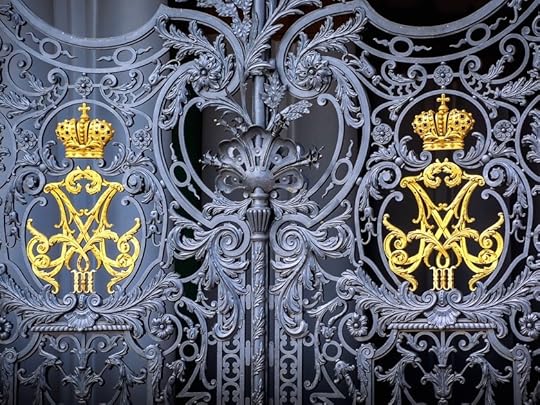 Europe and Central AsiaRussiaUkraineVladimir Putin
Europe and Central AsiaRussiaUkraineVladimir Putin
December 23, 2015
The Winners and Losers of ‘Nation-Branding’

MOTYL: Harper’s once called you the world’s premier Boratologist. How and why did you come to study the Borat phenomenon?
SAUNDERS: Shortly after returning to the US from my first visit to Kazakhstan in 2002, a friend told me I should check out HBO’s Da Ali G Show because there was someone on the program pretending to be a Kazakhstani. At the time, I had only known Sacha Baron Cohen through his connection with Madonna, but soon I started paying attention to his farcical treatment of Kazakh culture via the character of Borat. A couple of years later, as I was wrapping up my dissertation on Russian national identity in Kazakhstan and other post-Soviet republics, Borat’s hosting of the MTV Europe Music Awards triggered a major international imbroglio. Kazakhstan accused the British comedian of being the agent of foreign powers meaning harm to the country and then removed his website from Kazakhstani servers. Baron Cohen reacted swiftly, delivering a hilarious riposte in which he (as Borat) praised the government’s decision to “sue this Jew” (i.e. himself) before inviting “captains of industry” to come to Kazakhstan, thus wryly skewering Astana’s nation-branding efforts. Witnessing the ninth-largest country in the world (Kazakhstan) do battle with a satirical character (Borat), I decided it was important enough to start writing about from an academic perspective. By treating the subject as a serious event in international relations (despite the ridiculousness of it all), I started to be recognized as the “go-to” person for commentary on the Borat phenomenon, ultimately authoring a book on the subject as well as penning two articles, including one in the journal Slavic Review.
MOTYL: What are some of the Borat phenomenon’s lessons for what you call “nation-branding”?
SAUNDERS: Kazakhstan was lucky enough to have Roman Vassilenko, an eloquent and forward-thinking press attaché, in the embassy in Washington when Borat started becoming a global phenomenon in 2005–2006. As the country was already spending millions on branding activities targeting economic elites and policymakers in the US and Great Britain, Vassilenko saw an opportunity to reach out to the masses as well. Every time Baron Cohen appeared in character, whether to sing an anti-Semitic song in a saloon or threaten the government of Uzbekistan on the steps of the embassy, Vassilenko was there to tell Kazakhstan’s real story, and it worked. Today, Kazakhstan continues to reap the benefits of the free press it received as part of Baron Cohen’s innovative marketing campaign for the [2006 Borat] film, though the Borat connections still stings a bit. Two years later, Baron Cohen made another film based on his character Brüno, a flamboyant fashionista with a Nazi fetish. Shortly before that film came out, I asked several of my undergraduate classes to identify five things they knew to be true about Kazakhstan and Austria, respectively. As I suspected, my students were able to provide more accurate facts about Kazakhstan than about Brüno’s homeland. For good or ill, this testifies to the power of popular culture in global affairs.
MOTYL: What has Kazakhstan learned from the Borat “disaster”? How have the Kazakhs tried to turn it to their advantage?
SAUNDERS: When Da Ali G Show first premiered in the UK, Kazakhstan’s top diplomat in London tried to have the comedian banned by the British government, clearly not understanding England’s long history of freedom of expression and fondness for parody. Consequently, Kazakhstan appeared like a Sovietesque tin-pot dictatorship (a prejudice held by many in the West at the time). By the end of the Borat controversy, we saw President Nursultan Nazarbayev joking at a press conference that he would like meet Borat, realizing that, despite the initial bitterness, it was possible to make lemonade when you get (satirical) lemons thrown at you. Around the time of the film, currency exchanges in the UK were running out of tenge due to increased requests from British travelers to the country whose interest had been piqued by the Cambridge-educated mountebank Baron Cohen. Once that incontrovertible piece of evidence of the benefits of Borat presented itself, Astana moved quickly to leverage the spotlight for the benefit of the republic, ultimately synthesizing an elite-focused branding campaign with outreach to a much wider audience. New foci in the branding campaign included fashion, international sport, eco-tourism, and the country’s proven track record on religious tolerance. They were folded into the existing messages associated with natural resources, political stability, and a well-educated workforce. In the decade since Borat stormed into theatres, Kazakhstan has effectively distinguished itself from the rest of the Central Asian republics and is well on its way to achieving many of the lofty goals Nazarbayev set for the country back in the late 1990s.
MOTYL: Your current book deals with nation-branding in the post-Soviet states. How and why have different states adopted different strategies? Who’s been most successful? Least successful?
SAUNDERS: The Baltic states have certainly embraced state-branding with gusto. Estonia has been extremely successful in giving itself an international makeover, being recognized for its achievements far beyond the region. Being small and European helps. Lithuania and Latvia have also made great strides, but are still often conflated. Other than Kazakhstan, the Central Asian republics have performed poorly due to a number of factors, not least of which are the association with Afghanistan (the quandary of the geographical suffix “-stan”), massive corruption, and regional instability. In recent years, Azerbaijan has done very well due to massive investment in sport infrastructure, including hosting some high-profile international events. Like Kazakhstan, the country benefits from its oil wealth and minimal risks associated with the global Islamist insurgency. Russia claims to be engaged in nation-branding, but is unable or unwilling to behave in a way that will achieve the results one associates with becoming a “brand state” (the same can be said of Belarus, which is constantly framed as Europe’s “last dictatorship,” a difficult mantle to shed). Ukraine and Georgia have both invested enormous resources into nation-branding, often employing similar strategies (including Eurovision and tourism), but their efforts have been undermined by geopolitics, specifically problems with Russia, including the 2008 Georgian War, interruptions in natural gas shipments, economic boycotts, and of course the recent Russian interventions in Crimea and the Donbas. Armenia and Moldova barely register beyond the region.
MOTYL: What are the key factors of a successful nation-branding strategy?
SAUNDERS: Nation-branding is a lot like fandom. You need to get people to feel something about your country. Customers are loyal to Apple products because they have positive, often intangible, associations with the brand. Even when your iPhone gives you problems, this esprit does not fade. The same goes with nation-branding. For the countries of post-socialist Europe and Eurasia, brand identity is step one. Other than Russia, many in the West and other parts of the world are hard-pressed to tell you something that distinguishes Tajikistan from Turkmenistan or why you should visit Slovenia over Slovakia (or vice versa). The third wave of decolonization that came with the breakup of the USSR and Yugoslavia placed a host of new countries on the map, and they are all seeking to make themselves known and valued. Naturally, this has resulted in many voices speaking at once, with almost none being heard. State-branding takes vision, time, money, and effort. Public-private collaboration is a must, and the head of state needs to be behind any nation-branding effort. Inbound tourism is a great way to get the message across and the Baltics have done very well here. Ukraine also has a lot to offer, but the two revolutions and the war in the east have short-circuited the benefits gleaned from the past two decades of the country’s openness to Western visitors.
MOTYL: How would you characterize Russia’s nation-branding efforts?
SAUNDERS: Russia has adapted rather than adopted the idea. Moreover, since [Vladimir] Putin came to power, nation-branding in Russia has been compromised by the Kremlin’s political technologists. Certainly Russia has invested heavily in promoting the country’s openness to investment via expensive inserts in venues like the New York Times, hosting the Olympics and other global sporting events, and a variety of other traditional methods for improving its national image. However, when placed in the context of information management—dare I say postmodern propaganda—such efforts have a different effect from that of a smaller country’s efforts to become a brand state. Whether we speak of [the broadcaster] Russia Today’s promotion of Russia’s national interests, the Valdai Club’s outreach to Western academics, or the deployment of Russkii Mir centers around the globe, it is clear that nation-branding in Russia also means promotion of the country’s status as a great power with a global reach. Russia never has been and never will be a “normal country,” and so its nation-branding does not fit within the standard praxis. That being said, in recent years Russia has done a good job of promoting its literary and cultural heritage, the splendor of St. Petersburg, and the country’s growing IT capacity. However, the self-imposed embargo on European agriculture and the dimming of [former president and current prime minister] Dmitry Medvedev’s program for fiscal transparency has severely damaged Russia’s image.
MOTYL: And Ukraine’s?
SAUNDERS: I have followed Ukraine’s efforts quite closely for some years, including conducting multiple interviews with Vasyl Myroshnychenko, one of the major architects of the country’s nation-branding strategy. Geographically, Ukraine is the largest country in Europe and, as such, it has worked diligently to be seen as European. Ukraine has focused on culture first, using popular music, fashion, and folk art, utilizing what Myroshnychenko calls “universal languages” to open up dialogue with the rest of Europe. Kyiv always stresses its openness to the West, and until recently, its being a bridge to the post-Soviet East (i.e., Russia, Belarus, Central Asia, and the Caucasus). As part of this “open country” branding, it seems that the Ukrainian people actually bought into the message at home, with Euromaidan being the dramatic result. While the current situation in the country is dire, a sustained approach to burnishing its national image will certainly result in long-term dividends. Assuming a return to normalcy, Ukraine will soon be repositioned to resume its focus on branding an audience that is not distracted by “little green men” and the drums of war emanating from the Kremlin.
MOTYL: What are the major obstacles to a successful nation-branding strategy in Ukraine and Russia?
SAUNDERS: The tragic irony of the recent conflict with Russia is that Ukraine has finally shed its “Little Russia” brand, most likely for good. With the bloodshed associated with the Maidan uprising, the annexation of Crimea, and scenes of death and destruction in the country’s east, Americans, Canadians, and Britons all are now acutely aware of the differences between Ukraine and the Russian Federation. Despite the frightful cost, Ukraine has been able to step out of Russia’s shadow while simultaneously sloughing off the “neo-Soviet” patina the country had been developing since Viktor Yanukovych came to power [in February 2010]. All my sources in Russia tell me that the Kremlin is quietly winding down its adventurism in the Donbas, hopefully guaranteeing that things will start to get back to normal in Ukraine over the next few years. This will be good for the branding efforts of both Ukraine and the Russian Federation. Despite the chaos of the past decade, Ukraine has persevered in its efforts at achieving the status of a brand state. It will likely reap the benefits that come with such status. Russia is not in a position to do so due to its larger ambitions on the world stage. While Moscow may play lip service to the idea of nation-branding, Russia has proved to be a country where this postmodern method of statecraft cannot function as intended. Changing Russia’s brand, which is rooted in hundreds of years of history, is not likely to work no matter how much money is thrown at the problem.
OG Image: Europe and Central AsiaNorth AmericaUSKazakhstanRussiaRussianEuropeUK
Europe and Central AsiaNorth AmericaUSKazakhstanRussiaRussianEuropeUK
Alexander J. Motyl's Blog
- Alexander J. Motyl's profile
- 21 followers



